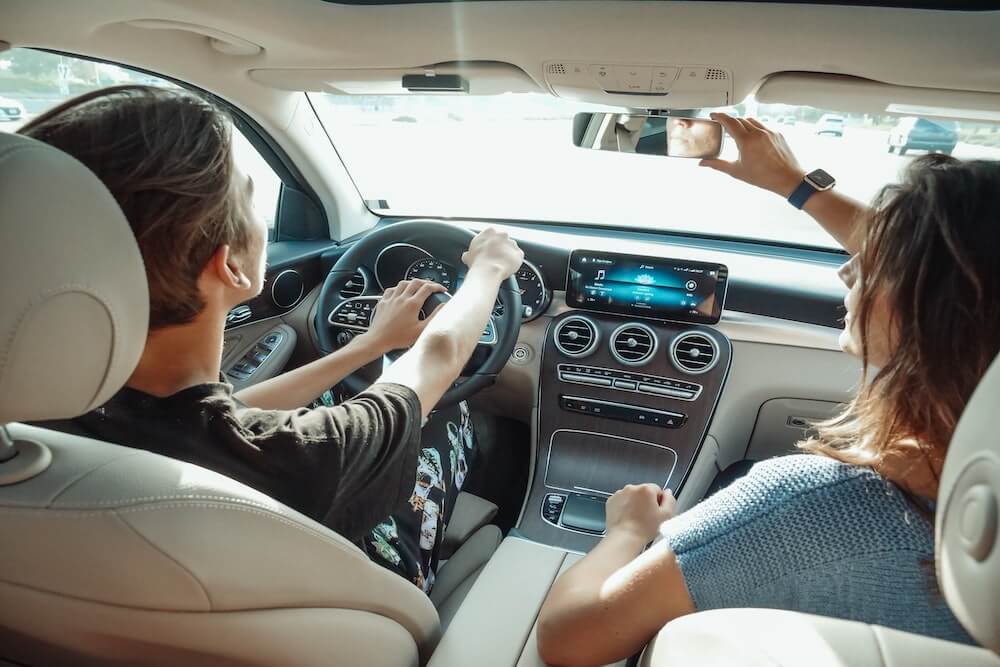
In the United States, motor vehicle collisions are the second leading cause of death for teens 13-19 years of age. Over 2,000 teenagers lose their lives in car accidents every year, and over 250,000 are treated in emergency rooms for crash injuries.
We can change these numbers. At DiPiero Simmons McGinley & Bastress, PLLC, our experience as car accident lawyers has taught us that most accidents are preventable. By practicing safe, attentive, and defensive driving—and teaching the next generation of drivers to do the same—we can work together to make our roads safer for all of us.
What Is Defensive Driving?
Defensive driving is a practice for safe driving that anticipates and prepares for potential hazards. A defensive driver assumes that other drivers might make mistakes or break traffic laws, and that environmental conditions can change at any moment. When a teen practices defensive driving, they can learn to defend themselves against risks such as drunk drivers, reckless drivers, adverse weather, and unpredictable traffic patterns.
This set of skills helps drivers of all ages and experience levels get in the habit of being on guard behind the wheel. When it comes to preventing collisions, assuming that you know exactly how other drivers will behave is never a safe attitude to hold. Drivers who are alert, defensive, and prepare for the worst are usually the safest drivers. Defensive driving is a mindset of continually and consciously reducing risk and reacting safely to every situation that is encountered.
Tips to Teach Your Teen Defensive Driving
The following best practices for safe driving can help a new teen driver anticipate potential risks and react quickly to avoid collisions.
Avoid Distractions
One of first and most important steps of defensive driving is staying alert. Teaching your teen driver that driving distracted is not an option can help lay the groundwork for lifelong safe driving habits. When a teen driver is distracted, they are not able to watch for potential hazards or act defensively when a dangerous situation arises. A teen driver should remember and keep in mind:
- Texting and driving is impaired driving. Never distract your eyes, mind, and hands with a cell phone behind the wheel. It is impossible to safely react to a car slamming on its brakes in front of you, for instance, if your eyes are on a cell phone screen.
- Other people in the car can be a major source of driver distraction. Remind passengers to refrain from talking loudly, moving, reaching around the vehicle, or engaging in other distracting behaviors. This is especially important for teen drivers who are still familiarizing themselves with roads, road signs, and traffic patterns.
- Loud music can distract a driver’s attention and prevent them from hearing important warning sounds—like another vehicle’s horn.
- Remember that, for a new driver, every task requires full and complete attention. Unlike seasoned drivers who have developed habit and muscle memory, teen drivers need to actively engage their minds in order to accomplish even the most basic driving tasks safely. Any distraction increases the likelihood of an accident.
Use Crash Avoidance Techniques
Simple crash avoidance techniques can help your teen driver keep themselves and their vehicle out of dangerous situations before they happen. As a more experienced driver, you can educate a new driver about some of the more common collision risks they may encounter on the road. Some of the following best practices for crash avoidance, among others, can help your teen avoid preventable accidents.
- Continually scan the roadways about 12-15 seconds ahead for hazards.
- Keep an eye alert for any environment hazards like downed trees, animals, potholes, uneven road surfaces, pedestrians, or other elements out of the driver’s control.
- Always check blind spots more than once before changing lanes. Don’t rely on mirrors or cameras alone.
- Remember you are sharing the road with pedestrians, motorcycles, bicycles, e-scooters, and other vulnerable vehicles. Be aware that they are harder to see than cars, trucks, or SUVs.
- Never rush through an intersection. Take your time and give others the right-of-way as required. Let another driver go first if they seem to be rushing ahead of you. Sometimes you need to sacrifice your right-of-way for the sake of safety.
- The speed limit posted is only for the best of driving conditions. Know when to adjust to your speed for weather, traffic, or environmental conditions. Slow down for railroad crossings, areas with high pedestrian activity, bumpy surfaces, speed humps, and whenever you feel that collision risk is high. Adopt a “better slow than sorry” approach whenever you are unsure about speed.
Keep Safe Distances
Novice drivers often make the mistake of following another car too closely, not taking into account the braking distance of the vehicle they’re driving. Teen drivers should be educated on the mechanics of stopping a car before taking it to the roads. This will provide them with a better concept of the actual distance required to stop once brakes are applied. By maintaining a safe distance between their car and others on the road around them, teen drivers can give themselves a cushion of time to react to another driver’s error or sudden move.
Speed is the dominant factor when determining how long a vehicle needs to stop. Speeding and tailgating is a dangerous combination—and a behavior that is too often observed in young drivers. There are multiple additional factors that influence braking distance. Teen drivers should be aware of these factors as well, so they can adjust their braking practices to the conditions. These factors include the condition of the tires, the condition of the road surface, the quality of the brake components, and the type of vehicle being driven.
Learn to Recognize High-Risk Driving Behaviors
Teach a new driver to watch out for and avoid dangerous drivers on the road. Encourage a teen driver to stay clear of any driver that they observe:
- Speeding or driving too fast for conditions
- Swerving
- Suddenly braking and rapidly accelerating
- Honking the horn aggressively
- Changing lanes frequently without using turn signals
- Running stop signs or running red lights
- Failing to yield to drivers with the right-of-way
- Cutting off other drivers
- Tailgating (following too closely)
- Drifting in and out of lanes
- Hitting curbs, guardrails, or other roadside objects
Show Courtesy to Other Drivers
Observing good driving etiquette is important for drivers of any age. Those teaching new drivers should be a model of how to be courteous and conscientious behind the wheel. Practicing using the road thoughtfully and responsibly is a way to develop a safe and healthy attitude toward driving. Here are a few tips to help a teenager learn proper road etiquette:
- Be generous with your turn signals. Don’t wait until the last second to signal a turn. Don’t make turns or change lanes without signaling.
- Don’t blind other drivers with your high beams. Turn your high beams down when another car is approaching or ahead of you on the road.
- Stay in the right-hand lane of a multilane highway unless you are passing. Don’t “hang out” in the left lane.
- Be considerate of other drivers when merging into traffic. Don’t cut anyone off or force another driver to brake for you.
- Always give pedestrians the right-of-way, even if they are not using a crosswalk.
- Be patient when other drivers make mistakes. There will always be other drivers making mistakes. Don’t let them be a cause of road rage or recklessness on your part.
Understand the Effects of Adverse Weather Conditions
Snow is not the only kind of weather that can affect safe road travel. Part of learning to drive well is understanding how varying types of weather conditions can impact road safety. Even a sunny day can be a danger when glare gets into a driver’s eyes and prevents them from seeing the road clearly.
When you practice with a new teen driver, try to expose them to many kinds of weather so they become familiar with how to handle a car under any conditions. Encourage your new driver to get used to things like warming up an engine on cold days, using a defroster to clear windows from the inside, scraping snow and ice off a vehicle, driving with sunglasses on, and using headlights in foggy weather.
Through practice, a novice motorist will be able to feel the effects of weather on road surfaces and how it changes visibility. Try to let your new teen driver experience driving in:
- Snow and ice
- Fog
- Nighttime
- Rain
- Sunrise and sunset
- Midday sun glare
- Strong winds
- Extreme temperatures
Legal Help After a Collision
If you or a young driver you know was involved in an accident caused by a negligent motorist, we may be able to help defend your legal rights. We offer free consultations to injury victims and their families. If you have a question about legal options following an accident in West Virginia, a car accident attorney from DiPiero Simmons McGinley & Bastress, PLLC is available to offer experienced guidance.






